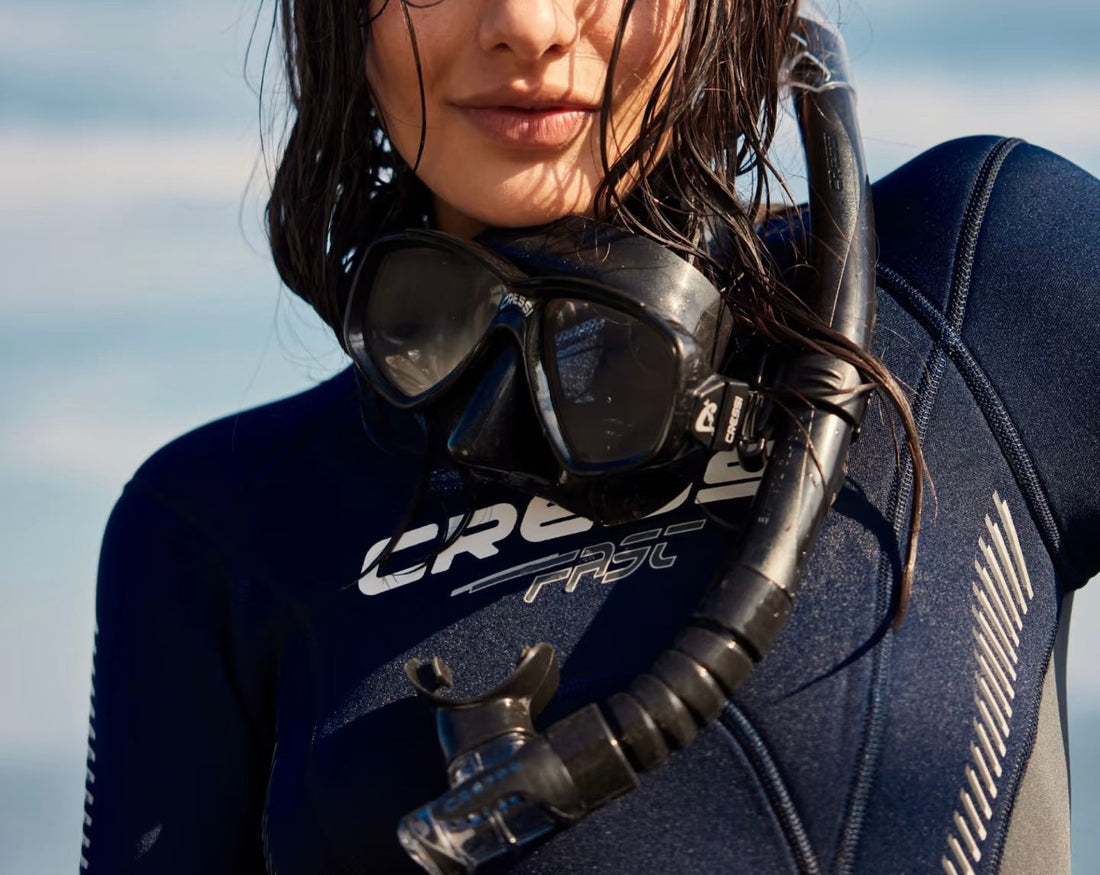
Neoprene Fabric: The Secret Behind Warmth, Flexibility, and Performance in Water Sports
When you slip into a wetsuit before diving, surfing, or paddleboarding, you’re not just wearing fabric — you’re wearing technology.
That sleek, stretchy material hugging your body is neoprene fabric, a synthetic rubber engineered to protect, insulate, and move with you.
From Arctic snorkeling in Iceland to tropical surfing in Bali, neoprene plays a crucial role in how we experience water and temperature.
Let’s explore what makes this fabric so unique — and why designers and athletes alike continue to rely on it.
What Is Neoprene Fabric?
Neoprene is a type of synthetic rubber (chloroprene rubber) first developed by DuPont in the 1930s.
Unlike traditional fabrics woven from yarns, neoprene is a foamed sheet material filled with tiny closed air bubbles. These air pockets trap heat, giving neoprene its signature insulation and buoyancy.
To improve comfort and strength, most neoprene fabrics are laminated with nylon or polyester knit on one or both sides — creating a durable, flexible composite that can stretch, resist salt water, and retain shape over time.

How Neoprene Fabric Is Made
The process begins with polymerizing chloroprene, which produces neoprene rubber chips.
These chips are melted, expanded with nitrogen, and foamed into soft, elastic sheets.
Manufacturers can control:
- Thickness: from 1mm for tropical surfing suits to 7mm for icy dives.
- Density: lighter foam offers better flexibility; denser foam retains more warmth.
- Lamination: bonding with stretch nylon or jersey gives the smooth outer texture familiar in wetsuits and performance wear.
👉 Related reading: Outdoor Fabric Guide
How Neoprene Keeps You Warm in Cold Water
This is where neoprene’s brilliance truly shines.
When you enter the water, a thin layer of water slips between your skin and the suit.
Your body quickly warms that water — and neoprene’s closed-cell structure traps it in place, preventing the surrounding cold water from drawing heat away.
In Extreme Conditions
In places like Iceland’s Silfra fissure, dry suits use thick neoprene layers to maintain body temperature even in near-freezing glacial water.
The tiny air cells inside neoprene act like microscopic thermos flasks, creating a stable microclimate around your skin.
In Surfing and Watersports
Surfers require warmth and flexibility.
That’s why modern surf suits use super-stretch neoprene, a more elastic blend that allows arm and leg mobility without sacrificing insulation.
Designers balance:
- Thermal retention (thicker neoprene = warmer)
- Mobility & comfort (thinner neoprene = flexible)
- Buoyancy & protection (medium density = best all-round performance)
Thickness often varies by season:
| Season | Typical Wetsuit Thickness |
|---|---|
| Warm waters (25°C+) | 1–2 mm |
| Moderate (18–24°C) | 3–4 mm |
| Cold (10–17°C) | 5–6 mm |
| Icy (<10°C) | 7 mm + accessories |
This engineering allows you to stay active in the ocean longer — safely and comfortably.
Other Uses of Neoprene Fabric
Beyond water sports, neoprene’s unique structure makes it invaluable across industries:
- Sports gear: knee and elbow supports, gym gloves, protective braces
- Fashion: structured dresses, sculptural outerwear, designer bags
- Accessories: laptop sleeves, camera pouches, wetsuit-style sneakers
- Industrial applications: insulation, gaskets, vibration dampening materials
Its combination of resilience, elasticity, and texture bridges performance and design.
👉 Also read: Is Nylon Fabric Breathable? Discover the Truth About This High-Performance Material
How to Care for Neoprene Fabric

Because neoprene is rubber-based, it requires gentle care to preserve its structure:
- Wash: Hand wash in cold water with mild soap; avoid bleach or fabric softener.
- Dry: Lay flat in shade — sunlight can degrade rubber.
- Store: Hang or lay flat; avoid creases that can cause permanent compression marks.
- Never iron or tumble dry.
Proper maintenance can extend your wetsuit’s life for years while maintaining elasticity and insulation.
Is Neoprene Fabric Eco-Friendly?
Traditional neoprene is derived from petroleum-based chemicals, which are non-biodegradable and energy-intensive to produce.
However, new sustainable alternatives are emerging:
- Limestone neoprene: made from natural limestone, reducing petroleum use.
- Yulex® natural rubber: harvested from rubber trees, offering similar performance with far lower carbon impact.
Brands like Patagonia have pioneered eco wetsuits using these materials, proving performance and sustainability can coexist.
👉 Related reading: What Is Moisture-Wicking Fabric?
Design Insight: How Fashion Uses Neoprene
Designers love neoprene for its clean lines and architectural body.
Unlike drapey fabrics, it holds structure beautifully — ideal for minimalist, futuristic silhouettes.
In fashion collections, it’s used for:
- Contoured skirts and dresses
- Oversized yet lightweight coats
- Sculptural handbags and accessories
Its soft, spongy texture gives garments a “technical couture” feel — bridging sportswear and high fashion.
Experience Neoprene and 50 Other Fabrics
Want to feel neoprene and other performance fabrics firsthand?
Explore our Fabric Swatch Pack for Designers.
This exclusive kit includes 50 commonly used fabrics, including neoprene, nylon, satin, and tulle, each with detailed descriptions and PDF annotations — perfect for designers, students, and fabric enthusiasts.
Conclusion
Neoprene fabric is more than just waterproof rubber — it’s a material that redefined how we explore, move, and stay warm in extreme conditions.
From Icelandic glacial dives to urban fashion runways, its balance of thermal protection, flexibility, and structure keeps it indispensable across worlds of performance and design.
Whether you’re a designer seeking innovation or an adventurer chasing waves, neoprene reminds us: great fabric isn’t just worn — it’s engineered for experience.
